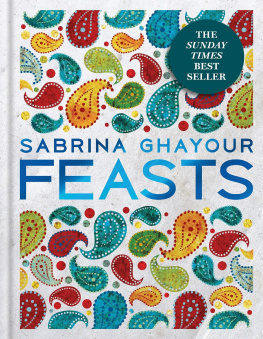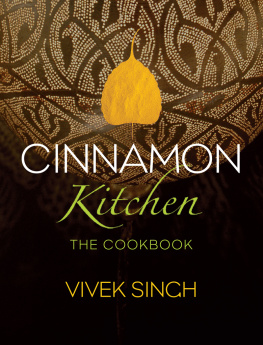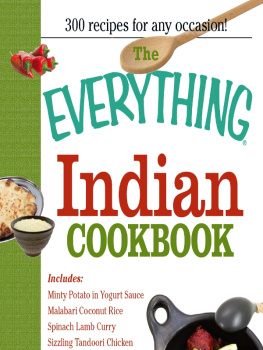
Cinnamon Club
Indian Cuisine Reinvented
Vivek Singh
with Abdul Yaseen and Hari Nagaraj

RANDOM HOUSE INDIA
Published by Random House India in 2011
Copyright Vivek Singh, Abdul Yaseen and Hari Nagaraj
Copyright of photographs Jason Lowe
Photographs on pg 45, 78 Gavin Bond
Design & illustration by Namrata Kumar
Random House Publishers India Private Limited
Windsor IT Park, 7th Floor, Tower-B,
A-1, Sector-125, Noida-201301, U.P.
Random House Group Limited
20 Vauxhall Bridge Road
London SW1V 2SA
United Kingdom
This eBook is copyright material and must not be copied, reproduced, transferred, distributed, leased, licensed or publicly performed or used in any way except as specifically permitted in writing by the publishers, as allowed under the terms and conditions under which it was purchased or as strictly permitted by applicable copyright law. Any unauthorised distribution or use of this text may be a direct infringement of the authors and publishers rights and those responsible may be liable in law accordingly.
EPUB ISBN 9788184002447
To my Dad,
who made me believe that the only boundaries
that matter are the ones in our mind

Introduction
I had been cooking for only eight years in the late nineties, but somehow I felt there was nothing new to do or learn in Indian cooking. Fabulous as it is, I felt that Indian cooking had gotten into a rut. Most revered references to grand banquets, lavish dishes, unusual techniques, or even creative new ideas dated back to two hundred years, if not more. Food, like most other art forms, flourishes best in good times, times of economic boom, peace, and joy. Therefore, its not difficult to imagine why creativity in food took a backseat in the Indian society in the nineteenth and most of the twentieth century with the numerous wars, famines, droughts, and the oppressive colonial times. Although we survived the hardships, other basics of survival took precedence over the arts. More recently between 195080, we were mostly inward looking, frugal, and extremely suspicious of anything foreign, and again not much changed in the way we ate. Most reputed hotels and restaurants liked to play safe and catered to the perceptions of their clientele rather than experiment in any way. This is fair if you are running a business but quite unadventurous if you are a chef. I felt the straitjacket of authenticity was a double-edged sword that worked much to the disadvantage of my creativity as well the cuisine. Needless to say, it was quite stifling and Id often feel I needed just that little bit more elbow room to be able to cook better. Luckily, I was not the only one who wanted to take Indian food to the next level; Hari and Abdul too believed that innovation today forms the basis of tradition tomorrow. We felt we could cook much better if we could be more creative and use better ingredients as it is a simple fact that quality ingredients win half the battle in any kind of cooking.
So when we launched The Cinnamon Club in London in 2001, we resolved to break away from the traditional norms while maintaining the basic essence of Indian food. By then, Hari, Abdul, and I had already been cooking together for three years. Some of our ideas had taken form in the first menu already but many more were yet to take shape in the months and years to come.
For example our Chicken Korma on the opening menu was not just another korma. It was a chicken breast flattened out, filled with a spiced mix of wilted spinach and apricot, rolled into a perfect roulade with cling film, first gently poached then quickly seared on a hot pan to give it colour, then artistically cut into two, presented on some miniature khasta rotis with kadhai style stir fry of vegetables and dressed with a fragrant cashewnut based korma sauce. This was a korma like none other. One of my favourites from the early dishes we created is the Tandoori Fillet of Sea Bream with Pomegranate Extract. It was a whole fillet of sea bream with skin, and you immediately recognized the fish, its great crisp textures, beautiful shapes, and the intense red, sharp, and sweet pomegranate reduction made an excellent dressing. Again, we reinvented the fiercely spiced Goan Style Pork chop, serving it with rice vermicelli. The chop was cooked to order and even though it was fiercely spiced, it was always possible to taste the quality of the meat.
In 2001, we felt we had only just scratched the surface. But the promise of things to come kept us excited and motivated. There are several signature dishes that we created at The Cinnamon Club like the Tandoori Rack of Lamb with Saffron Sauce, Rajasthani Roast Saddle of Red Deer with Pickling Spices, Fenugreek Crusted Chicken Breast with Tomato Quinoa, Tandoori Fillet of Halibut with Yoghurt Kadhi Sauce and Green Pea Crush to name a few. The process of creating new dishes over the years has been so spontaneous that often I find it difficult to remember which one of us came up with the idea. It is a challenge that could upset and disturb some chefs but for the three of us, the joy of creating a new style of cooking takes precedence over the propriety of the idea. Although the origin of individual ideas may have blurred today, the collective style that has emerged is a thing of joy and pride and I feel extremely fortunate to be cooking with exceptionally gifted and visionary colleagues who share my ideals and dreams.

So what is modern Indian food? In my opinion it is anything that reflects the lifestyle, tastes, and values of the young, modern, and cosmopolitan India. It should recognize and incorporate our enhanced health needs, awareness, and appreciation of the world that we travel, work, and live in. We, at The Cinnamon Club believe that food does not exist in a void and with more people travelling to different countries and cultures, there is exposure to various styles of cuisines. A city like London or Mumbai presents an incredible choice of cuisines to its residents and visitors alike. I still remember how a guest once came in to our restaurant after having eaten at Lahore Kebab House the previous night. He just could not stop raving about the Methi Gosht and kept saying how much he missed the rich, earthy, gutsy nature of Indian food in the modern Indian interpretations. As we chatted, he set me a challenge to create a modern dish with a similar gutso as the traditional Methi Gosht he had eaten. I remember, I marinated a saddle of lamb in tandoori spices, with fenugreek, made a very spicy keema masala enriched with sweetbreads and livers, finished with shredded spinach and fenugreek leaves. We then cooked the saddle medium in the tandoor, sliced it on the bed of keema masala, garnished the saddle with more crisp fried fenugreek and served it with mini garlic and methi naans. The guest was blown away and a new avatar of the eternally popular Methi Gosht was born!

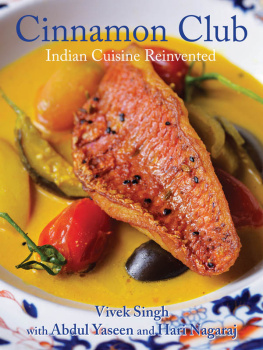
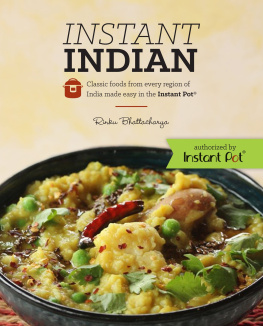

![Anita Jaisinghani - Masala: Recipes from India, the Land of Spices [A Cookbook]](/uploads/posts/book/320725/thumbs/anita-jaisinghani-masala-recipes-from-india-the.jpg)
